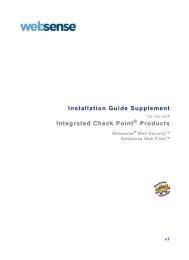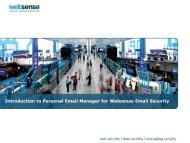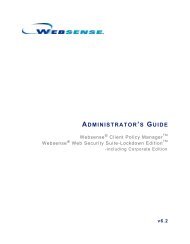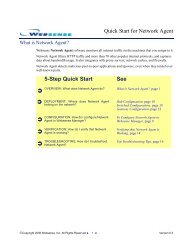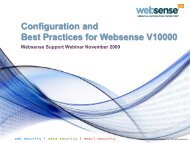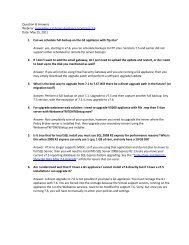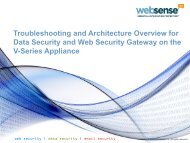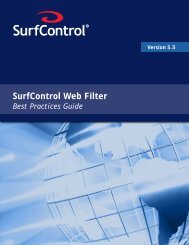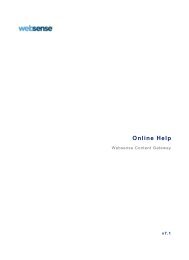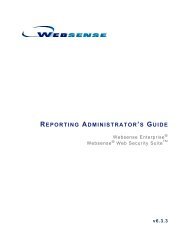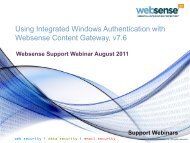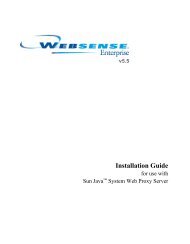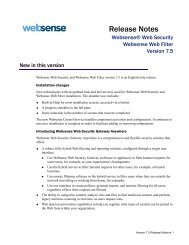Create successful ePaper yourself
Turn your PDF publications into a flip-book with our unique Google optimized e-Paper software.
Chapter 2: Establishing Filtering PoliciesEach URL must be on a separate line.Include the protocol for any non-HTTP site. If the protocol is omitted,<strong>Websense</strong> software filters the site as an HTTP site.Note<strong>Websense</strong> software recognizes approved URLs exactly asthey are entered. This means that if you generally blocksearch engines, but include www.google.com as anapproved URL, users must type the full address to accessthe site. If a user types just google.com, the site is blocked.If you enter google.com, all sites with google.com in theaddress (such as maps.google.com) are permitted.<strong>Websense</strong> software cannot match a custom URL with itsequivalent IP address. To recategorize both the text URLand the IP address of a site, add both to the list:63.212.171.196www.websense.com4. Click OK. Newly-added URLs appear at the end of the list.5. Repeat steps 2 through 4 for each category to which to add custom URLs.6. Click Save Changes above the navigation tree.Defining custom categories and protocolsDefine custom URL categories and protocols to provide more precise filteringand reporting for your organization. For example: Create a custom category called Business Related and populate it withsites used for daily business. Create a custom protocol called Company Messaging to make it easy tolog use of a proprietary IM tool.Custom URL categories and protocols are added to existing Master Databaseparent categories and protocols.Adding a custom categoryYou can create up to 100 custom URL categories.<strong>Websense</strong> Express User <strong>Guide</strong> 45



